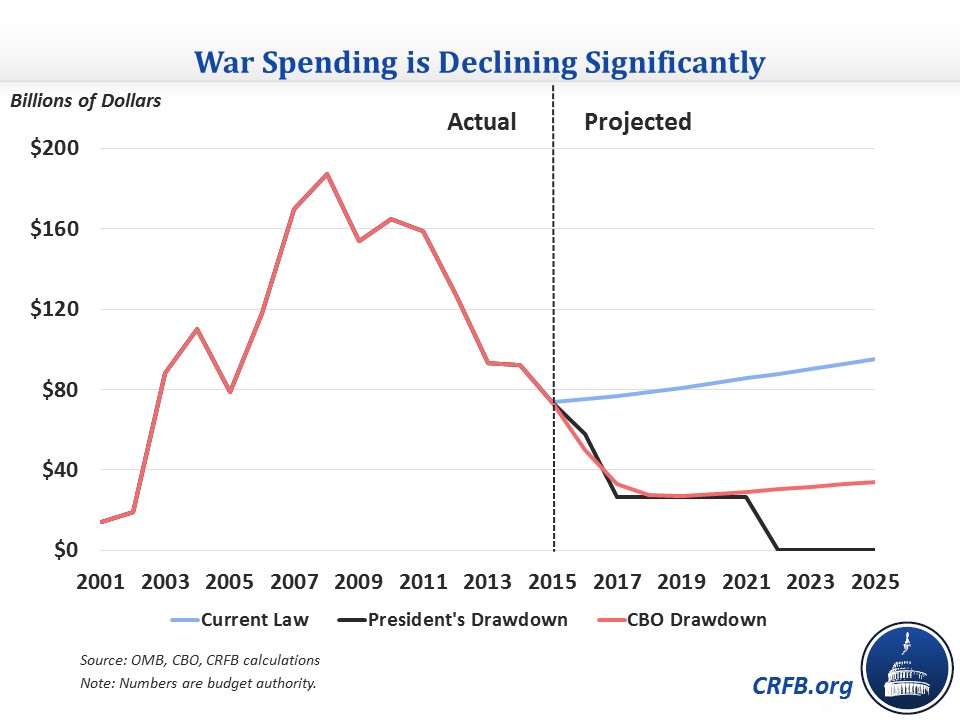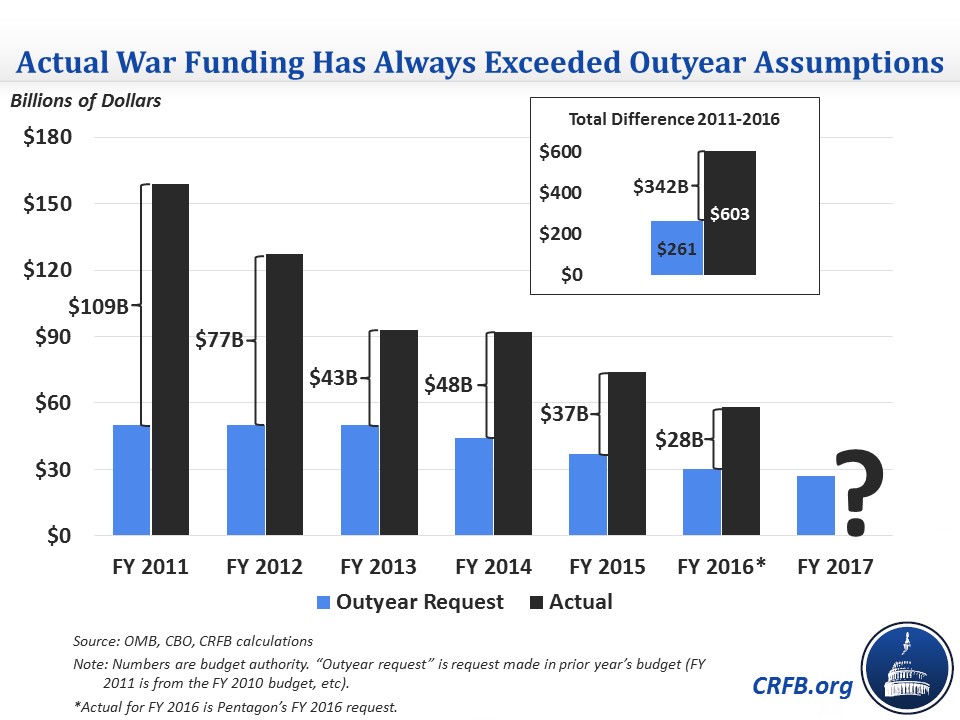President's Budget Proposes to Completely Wind Down War Spending
President Obama sent a letter to Congress yesterday asking for a formal three-year authorization for a campaign against ISIS. At the same time, though, the President's budget includes a plan for phasing down the war spending category, known as Overseas Contingency Operations or (OCO), over time. Not only does the budget lay out an aggressive drawdown plan, it also states that the Administration will develop a plan to transition all OCO spending that will remain back to the non-war defense budget by 2020. This blog will take a look at the recommendations of the budget for OCO.
As combat troops have withdrawn completely from Iraq and mostly from Afghanistan, war spending has fallen by 60 percent from its peak in FY 2008 (from $187 billion to $74 billion in FY 2015). The reduction in the spending path for OCO as a result of the drawdown going forward has been made uncertain by the tendency of lawmakers to use the uncapped OCO category to backfill the non-war defense budget that is subject to spending caps. For example, the FY 2015 "CRomnibus" legislation provided $7 billion more than the Administration's OCO request. This included $1.7 billion for Migrant and Refugee Assistance, an amount larger than the State Department's request for that category in both the base budget and OCO combined.
In order to lock in the savings from the drawdown and try to shut down OCO as a slush fund for defense, the budget would cap total OCO spending through 2021. It would establish an aggregate cap of $450 billion of total OCO budget authority between 2013 and 2021, which after a FY 2016 request of $58 billion would allow an average of $27 billion per year after that. Beyond 2021, the OCO category and separate spending for war activities outside the regular defense budget is completely eliminated even though the regular spending caps would be extended through 2025. In total, this path "saves" $557 billion compared to growing current spending with inflation (which nobody plans on doing). CBO's drawdown path has a similar amount of spending but assumes continued troop presence after 2021, so it saves $100 billion less.
One thing to note is that the budget's outyears -- the years after the immediate upcoming fiscal year -- have assumed much lower war spending than has actually been enacted, although that gap is narrowing. The FY 2010 budget assumed an FY 2011 outyear total of $50 billion for OCO, but nearly $160 billion ended up being appropriated. Last year, Congress appropriated double the amount assumed in the FY 2014 budget ($74 billion versus $37 billion). In general, actual spending has been about double the outyear assumption in the last few years. Thus, there is a question about whether actual spending will be limited to the average of $27 billion per year allowed by the proposed cap.
There is also reason to be concerned about the assumption of no spending after 2021 as unrealistic given the significant amount of the non-war budget which is now apparently embedded in OCO. The budget does acknowledge that zeroing out OCO will not be feasible if lawmakers do not enact further sequester relief (the budget provides $145 billion of relief between 2017 and 2021). Importantly, though, the budget states that the Pentagon would develop plans to gradually shift enduring OCO spending back to the regular budget starting in 2017. So unlike previous budgets where the assumption of zero war spending after 2021 seemed to be more of an assumption than an actual policy goal, the Administration appears to be taking it seriously this time. That is certainly encouraging.
One note of caution: lawmakers should not take the budget's condition of zeroing out OCO being accompanied by sequester relief as an excuse to pay for sequester relief by drawing down war spending. The war drawdown is current policy; it is simply not reflected in the budget baseline because of a technicality. Any sequester relief should be paid for with legitimate other savings, and the war drawdown's "savings" should not be used to offset any other policies.
Overall, lawmakers should pay attention to the detailed FY 2016 request and at a minimum avoid exceeding the $58 billion funding level. But we hope that they go further and winnow out spending that is not directly related to the war effort to make the transitioning of OCO spending to the regular defense budget easier.
See our one-pager for more on how lawmakers can end gimmicking of OCO spending.




